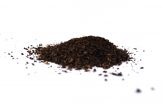(Press-News.org) A new, noninvasive nuclear medicine test can be used to determine whether aromatase inhibitor treatment will be effective for specific cancer patients, according to a recent study reported in The Journal of Nuclear Medicine. The research shows that a PET scan with the ligand C-11-vorozole reliably detects aromatase in all body organs - demonstrating the value of its future use to pre-determine the effectiveness of the treatment for breast, ovarian, endometrial and lung cancer patients, potentially reducing unnecessary treatment costs and adverse effects.
Aromatase inhibitors are drugs that work by blocking the aromatase enzyme, which turns the androgen hormone into cancer-stimulating estrogen. They are widely used in the adjuvant treatment of breast cancer and other endocrine conditions. However, no quantitative, noninvasive studies had been done of the distribution and regulation of aromatase in living humans.
Anat Biegon, PhD, corresponding author of the study, explains, "This is the first study conducted in living human subjects that surveys the whole body, comparing healthy young and old men and women."
For the study, 13 men and 20 women were injected intravenously with C-11-vorozole (111-296 MBq/subject), with PET data acquired over a 90-minute period. Each subject had four scans, two per day separated by two to six weeks. Brain and torso or pelvic scans were included. Young women were scanned at two discrete phases of the menstrual cycle (midcycle and late luteal). Men and postmenopausal women were also scanned after pretreatment with a clinical dose of the aromatase inhibitor letrozole. Time-activity curves were obtained, and standardized uptake values (SUV) were calculated for major organs, including brain, heart, lungs, liver, kidneys, spleen, muscle, bone, and male and female reproductive organs. Organ and whole-body radiation exposures were calculated using OLINDA software.
The study shows for the first time that the body organ with the largest stable capacity for estrogen biosynthesis is the male brain, closely followed by the female brain. Aromatase availability is slightly but consistently higher in all organs in men relative to women, with the exception of the ovary. In addition, aromatase availability in the ovary is tightly linked to the ovulatory phase of the menstrual cycle in young women, with increased levels evident in one ovary/cycle around the time of ovulation. Also of interest is the finding that aging and cigarette smoke reduce aromatase availability in the brains of healthy men and women.
Dr. Biegon points out the significance of the study: "Research using in vitro methods indicates aromatase over expression is not limited to breast cancer and is evident in a considerable proportion of ovarian, endometrial, and lung tumors. This study provides methodological, baseline and dosimetry information supporting the use of PET and C-11 vorozole in the non-invasive identification of individuals with disparate disorders who may benefit from treatment with aromatase inhibitors." She notes, "It also offers the ability to distinguish breast cancer patients who are not likely to benefit from this treatment, reducing unnecessary treatment costs and adverse effects. Finally, aromatase imaging can be used in monitoring efficacy of treatment with aromatase inhibitors and aid in the development of new drugs in this class."
Another key finding relates to the differences between men and women. Dr. Biegon states, "Radiotracer uptake and the resultant radiation exposure can be sex-dependent and strongly modulated by hormonal status. Nuclear medicine procedures need to be adjusted for these factors when applied in women."
INFORMATION:
Authors of the article "Aromatase Imaging with [N-Methyl-11C] Vorozole PET in Healthy Men and Women" include Anat Biegon, David L. Alexoff, Sung Won Kim, Jean Logan, Deborah Pareto, David Schlyer, Gene-Jack Wang, and Joanna S. Fowler.
Please visit the SNMMI Media Center (http://www.snmmi.org/Media.aspx) to view the PDF of the study, including images, and more information about molecular imaging and personalized medicine. To schedule an interview with the researchers, please contact Laurie Callahan at (703) 652-6773 or lcallahan@snmmi.org. Current and past issues of The Journal of Nuclear Medicine can be found online at http://jnm.snmjournals.org.
About the Society of Nuclear Medicine and Molecular Imaging
The Society of Nuclear Medicine and Molecular Imaging (SNMMI) is an international scientific and medical organization dedicated to raising public awareness about nuclear medicine and molecular imaging, a vital element of today's medical practice that adds an additional dimension to diagnosis, changing the way common and devastating diseases are understood and treated and helping provide patients with the best health care possible.
SNMMI's more than 17,000 members set the standard for molecular imaging and nuclear medicine practice by creating guidelines, sharing information through journals and meetings and leading advocacy on key issues that affect molecular imaging and therapy research and practice. For more information, visit http://www.snmmi.org.
CHICAGO (May 7, 2015): Patients undergoing colorectal operations who participated in an enhanced recovery program left the hospital sooner and had significantly lower hospital costs than patients who had the traditional approach to their care, according to a new study, which also found further postoperative improvements after adding an infection prevention protocol. The study is published online as an "article in press" on the Journal of the American College of Surgeons website in advance of print publication later this year.
"Enhanced recovery after surgery" is a multicomponent ...
Schizophrenia affects millions of people worldwide but the cause of its wide-ranging symptoms remains largely unknown.
At Brandeis University, researchers believe they have discovered an abnormality in the schizophrenic brain that could be responsible for many of the disease's symptoms and could provide a drug target for therapeutic treatments.
Led by John Lisman, the Zalman Abraham Kekst Chair in Neuroscience and professor of biology, the research team published their findings in a recent issue of the Journal of Biological Psychiatry. The paper was co-authored by ...
Traditionally, patients with endometrial cancer -- cancer of the womb lining -- have their disease risk classified using a combination of clinical and tissue characteristics, including their age and the growth and invasion of their tumour.
Around 15-20% of patients have high-risk disease, but it is unclear what the best treatment approach is for these patients. Now Manchester researchers have investigated genetic alterations in high-risk endometrial cancer, to see if they could be used to create tumour subtypes.
Professor Richard Edmondson, Professor of Gynaecological ...
Amsterdam, May 7, 2015 -- Elsevier journal Maturitas today announced the publication of a position statement by the European Menopause and Andropause Society (EMAS) covering non-hormonal management of menopausal vasomotor symptoms.
Hot flashes are a common menopausal symptom. They tend to intensify during the perimenopause and usually subside within 5 years after the final menstrual period. However in some women frequent hot flashes are a long term problem and may last for more than 7 years. While estrogen-based menopausal hormone therapy is the most effective treatment ...
It has traditionally been assumed that these by-products - coffee grounds and coffee silverskin, have few practical uses and applications. Spent coffee grounds are sometimes employed as homemade skin exfoliants or as abrasive cleaning products. They are also known to make great composting agents for fertilizing certain plants. But apart from these limited applications, coffee by-products are by and large deemed to be virtually useless. As such, practically all of this highly contaminating 'coffee waste' ends up in landfills across the globe and has a considerable knock-on ...
This news release is available in German.
How did the first complex eukaryotic cells with their organelles develop from simple prokaryotes, i.e. bacteria or archaea? This is a highly debated topic in evolutionary research but the question remains largely unresolved. Genomic research has shown that the organelles delivering energy in eukaryotic cells stem from an early bacterial symbiont. Since Archaea have also played an important role in the evolution of eukaryotes, current models suggested, that a primordial Archaeon might have engulfed a bacterium and in this ...
A common method for learning more about an animal's ecology and behaviour is to analyse the chemical composition of its hair. This involves the analysis of isotopes, which are variants of a chemical element with different atomic weights. The ratio of different isotopes of hydrogen, oxygen, carbon and nitrogen in a sample can provide important insights on water intake, nutrition and habitat.
Martina Burnik Šturm and Petra Kaczensky from the Research Institute of Wildlife Ecology at the University of Veterinary Medicine Vienna investigate the ecology of free-ranging ...
Women's magazines influence whether women decide to have a more natural childbirth or not, with most of the messages biased towards promoting the benefits of medicalised birth.
Researchers from Monash University and Queensland University of Technology have studied how popular media influences women's choices for childbirth
The study, published in Women & Health, specifically aimed to assess the effect of communicating the benefits of more natural birth (e.g. no medical intervention such as epidurals or caesarean section).
Kate Young, lead researcher from Monash's ...
People with diabetes who enroll in a health plan tailored to their medical condition are more likely to stick to their medication and actively take charge of their own health care. These are among the findings¹ of a study into the effectiveness of the Diabetes Health Plan, the first disease-specific health plan in the United States for patients with diabetes and pre-diabetes.
The health plan also helps reduce medication costs and ultimately may provide value for money to employers who provide this option to their employees, writes lead author O. Kenrik Duru of the ...
Selling used to be so simple: pack up the wagon, harness the horse, and head to the nearest settlement. Today, retailers have to allocate their marketing dollars across a multitude of channels, from stores, catalogs, and traditional media to websites and apps. Recent research about consumer adoption of new sales channels indicates that marketing campaigns focused on social media and socioeconomic groupings are likely to give the greatest boost to disruptive new channels - but help propel new brick-and-mortar venues as well.
In "Social Contagion and Customer Adoption ...


